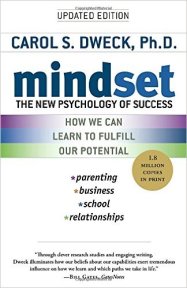The subject of perfectionism has come up a lot lately with my clients. Though we generally all agree that perfectionism can be stifling and problematic, we also seem reluctant to let it go. I include myself in that category, or at least I used to.
I’m a fairly well recovered perfectionist now but it was a long, hard slog to get here. Some might even say I’m too well recovered now but…c’est la vie. Anyway, what about you?
If you have perfectionist tendencies, you surely know it. What you may not know is how it can hurt you or what you can do about it. First, as with every behavior that we’re addicted to, we must recognize that we’re gaining something from it. Otherwise we wouldn’t do it. What is it for you? A sense of control? A sense of achievement? Admiration from others?
One thing we aren’t gaining from perfectionism is higher performance. This fascinating article in the Harvard Business Review, The Pros and Cons of Perfectionism, According to Research, highlights the findings of a meta-analysis of 95 different studies on perfectionism. The researchers found two distinct motivations for perfectionism: excellence-seeking perfectionism and failure-avoiding perfectionism. Even though one led to some more positive results (you guessed it – excellence-seeking,) neither one led to higher performance. That’s right – they found no correlation between perfectionism and high performance. Then why do it?? I suggest perfectionism gives us the illusion of higher performance, which may be one reason we cling to it.
Perfectionism can actually hinder performance by slowing down decision-making, taking focus and energy from higher priority tasks, avoiding challenges and more, as outlined in this HBR article, How Perfectionists Can Get Out of Their Own Way. Clearly, none of these are the way to get ahead in business.
If you’re a leader, something else you must consider is what your perfectionism is costing your team. If you lead others, the ripples go far beyond yourself. Not only you, but also your team may be more likely to experience the above obstacles to high performance. In addition, when you expect perfection, do you celebrate achievements? You might be inclined not to because you are so focused on the one tiny detail that didn’t go right vs. the big picture goal that did. But if you focus on the imperfect details every time, will your team be inspired? Or will getting it “right,” (i.e., pleasing you) come to feel like a Sisyphean task?
The good news is perfectionism, like any other habitual behavior, can be changed. Here are a few ideas to help you get started:
- Read the above article on getting out of your own way and implement some of the suggested changes.
- Figure out what needs you’re meeting by engaging in perfectionism and then ask yourself how else you can get those needs met or if it’s something you can let go of now that you’re making a conscious decision.
- In the words of the late Jean Otte, founder of WOMEN Unlimited, Inc., “Think excellence, not perfection.” Once you’ve done it well, move on, don’t waste additional time and energy making it perfect. There’s nothing higher than an A, really. And some things only require a B, if we’re being honest. Not brain surgery, but other things.
- Get “feed-forward” from those whose performance you admire. Ask: “How you do effectively manage perfectionism?”
- Dig into your attitudes and behaviors around risk. (A post for another day.) It’s all connected.
If you’re a perfectionist, good luck on your journey to letting go. You are going to fail sometimes and that’s absolutely okay. Just get back up and keep moving forward and soon you’ll be saying you’re a recovered perfectionist too.



 I went to an offsite meeting for
I went to an offsite meeting for 
